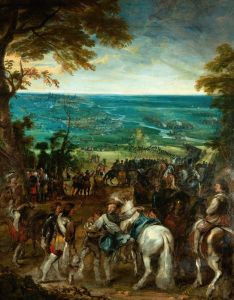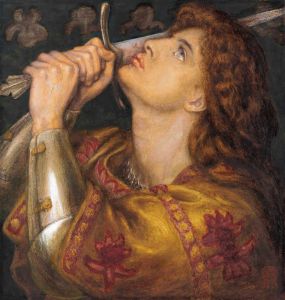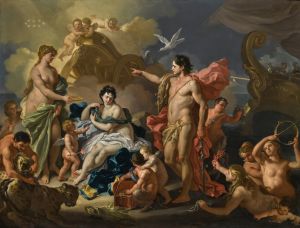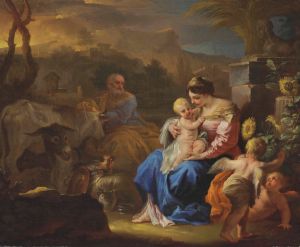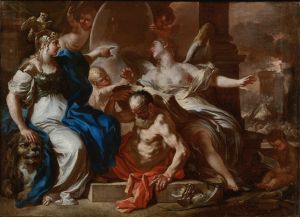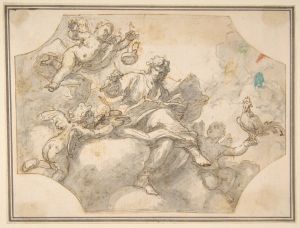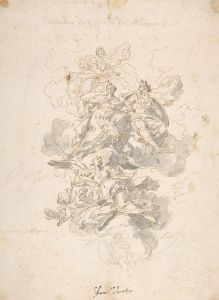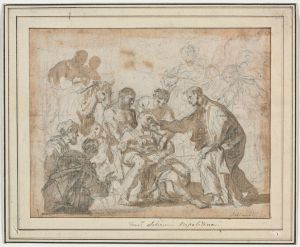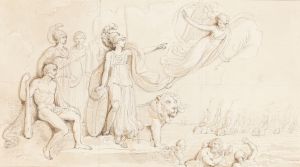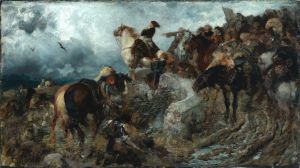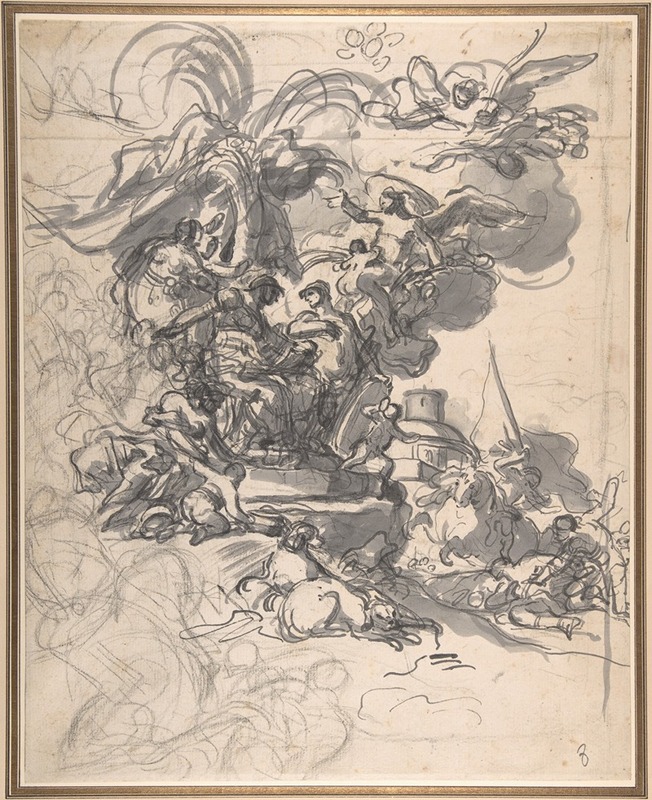
The Prophetess Deborah Ordering Barak to Take Arms against Sisera
A hand-painted replica of Francesco Solimena’s masterpiece The Prophetess Deborah Ordering Barak to Take Arms against Sisera, meticulously crafted by professional artists to capture the true essence of the original. Each piece is created with museum-quality canvas and rare mineral pigments, carefully painted by experienced artists with delicate brushstrokes and rich, layered colors to perfectly recreate the texture of the original artwork. Unlike machine-printed reproductions, this hand-painted version brings the painting to life, infused with the artist’s emotions and skill in every stroke. Whether for personal collection or home decoration, it instantly elevates the artistic atmosphere of any space.
Francesco Solimena's painting "The Prophetess Deborah Ordering Barak to Take Arms against Sisera" is a notable work of art that captures a significant biblical event. Solimena, an Italian Baroque painter, was renowned for his dynamic compositions and dramatic use of light and shadow, characteristics that are evident in this particular painting.
The painting depicts a scene from the Book of Judges in the Hebrew Bible, specifically Judges 4:6-16. Deborah, a prophetess and judge of Israel, is shown commanding Barak, the military leader, to gather an army and confront Sisera, the commander of the Canaanite king Jabin's army. This narrative is significant as it highlights Deborah's role as a leader and a figure of authority, which was uncommon for women in the historical context of the story.
In Solimena's depiction, Deborah is often portrayed with a commanding presence, emphasizing her role as a divinely inspired leader. Barak, on the other hand, is typically shown in a posture of attentiveness or readiness, reflecting his willingness to follow Deborah's guidance. The painting captures the moment of decision and action, a pivotal point in the biblical narrative where faith and courage are called upon to confront oppression.
Solimena's style is characterized by its dramatic intensity, a hallmark of the Baroque period. His use of chiaroscuro, the contrast between light and dark, adds a sense of depth and drama to the scene. This technique not only highlights the figures of Deborah and Barak but also serves to focus the viewer's attention on the emotional and spiritual gravity of the moment.
The historical context of the painting is rooted in the Baroque era, a time when art was used to convey religious themes with emotional depth and grandeur. Solimena, active in the late 17th and early 18th centuries, was part of the Neapolitan school of painting, which was known for its vibrant colors and dynamic compositions. His works often reflect the influence of other Baroque masters, such as Luca Giordano and Mattia Preti, yet Solimena developed his own distinctive style that combined dramatic narrative with meticulous detail.
"The Prophetess Deborah Ordering Barak to Take Arms against Sisera" is an example of how biblical stories were used to convey moral and spiritual lessons during the Baroque period. The painting not only illustrates a historical and religious event but also serves as a reflection on themes of leadership, faith, and divine intervention. Through his art, Solimena invites viewers to contemplate the courage and conviction required to confront challenges, a message that resonates beyond the specific biblical context.
In summary, Francesco Solimena's painting is a masterful representation of a key biblical story, rendered with the dramatic flair and emotional intensity characteristic of the Baroque period. It highlights the roles of Deborah and Barak in a narrative of faith and leadership, captured through Solimena's skilled use of composition, light, and color.






